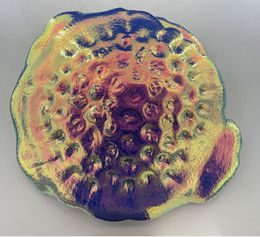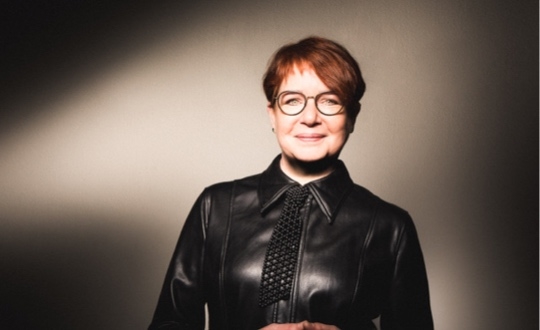
Welcome to the world of Andrea Fisk and Jess Thomas Hinshaw




Photographs of Shapeless Studio projects, top left and bottom right © Kate Sears; top right © Kirsten Francis; bottom left © Hagan Hinshaw
Collaboration, functionality and sustainability: these are the three core values behind the NYC-based design firm Shapeless Studio. Prioritizing the authentic and handmade, the studio's founders Andrea Fisk and Jess Thomas Hinshaw create interiors that are built to last and adapted to each of their clients' needs. Join us as we chat with Andrea and Jess about the need for sustainability in the design world, their relationship to the fine arts, and their dream interior design projects!
1. Hello Jess and Andrea! Can you tell us a bit about your careers in interior design so far? What led to the creation of Shapeless Studio?
Jess: Both Andrea and I worked together at a design build for a number of years prior to starting Shapeless Studio. We have a deep love for residential architecture and interiors. There is something strangely intimate about creating a home for families. We love focusing on sustainable materials and thoughtful details in a way that will impact our clients' lives.
Andrea: When we decided to branch out on our own, we knew we wanted to create a collaborative, supportive office where our employees felt empowered to voice their ideas. We focus on creating a community within our office, but also within the makers of Brooklyn and New York state at large. We feel enormously lucky to live adjacent to so many artisans.
2. How has studying the arts and humanities influenced your interior design? Are there any particular aspects of your studies that you feel have particularly stuck with you?
J: In college, I studied a wide range of subjects. At first I was sure I was going to be a marine biologist. This soon shifted to primatologist, then anthropologist, then art historian, then artist, and finally art historian modified with studio art. I feel that the diversity in my education allows me to see design from a multitude of perspectives. I spent a semester in Rome to study art history, and I was struck by how architecture and art were one – seamlessly integrated and encompassing. It was at this moment I decided that I wanted to study architecture, as it seemed like a real fusion of my interests, art married with the concreteness of science.
A: My degree is a Bachelor of Humanities and Arts in Creative Writing and Architecture, with a minor in Photography. Most of my creative writing coursework was in poetry, which ingrained a very strong appreciation for the editing process. Is there a way to say the same thing in fewer words? How is a particular element working to support the whole piece? When we design a custom home, we often find ourselves revising the same elements many times, revisiting the same decisions over and over again, making small tweaks and improvements. While this can sometimes be tedious, I think that level of attention is what can really elevate a work to the level of art.

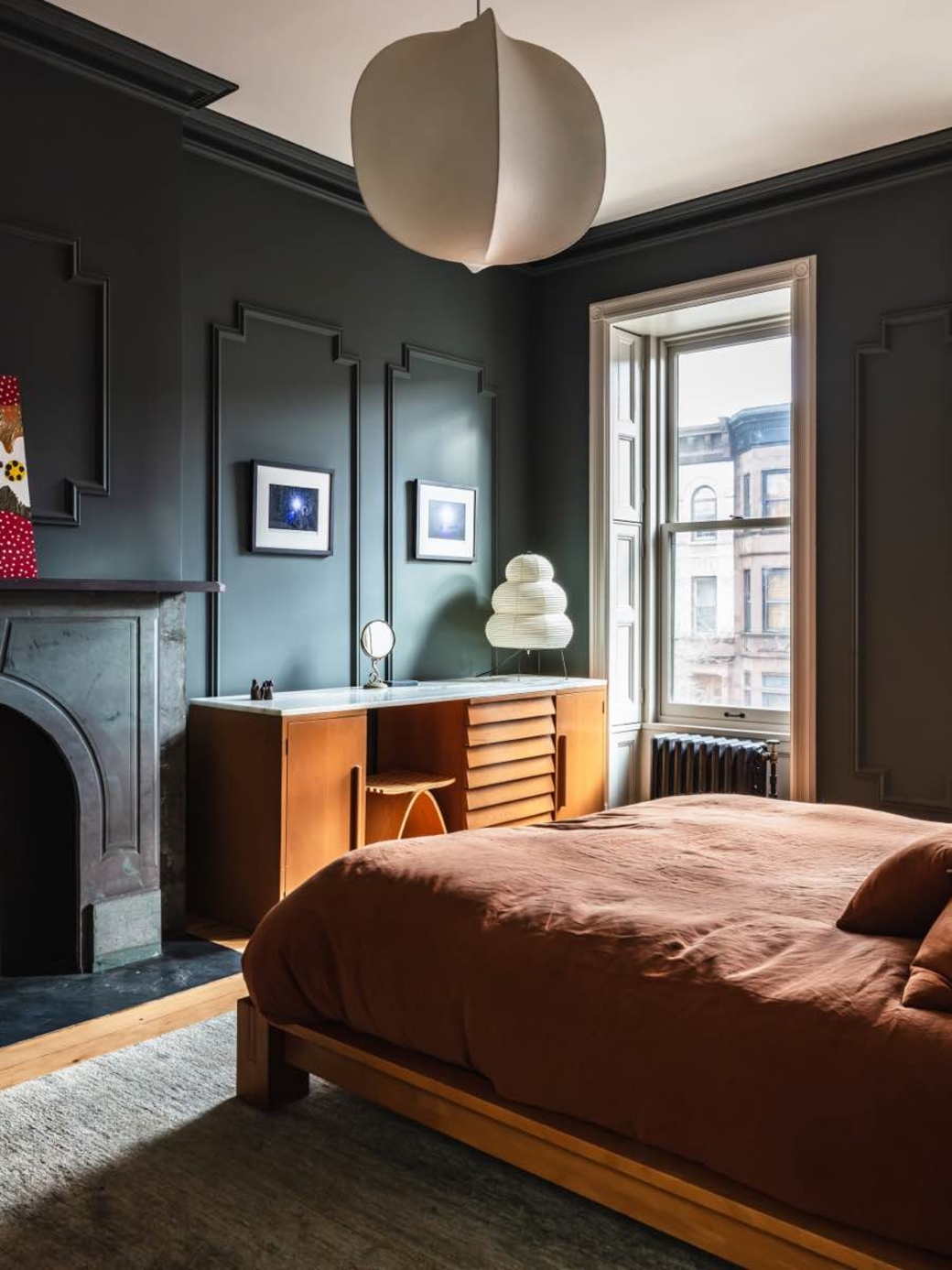
Photographs of Shapeless Studio projects © Hagan Hinshaw
3. Which visual artists do you have your eye on at the moment?
A: I've been obsessed with Genieve Figgis' work. I find her paintings to be hysterical. They are simultaneously beautiful, garish, honest, judgemental, and a little bit naughty. It's perfect.
J: I love how delicate, calming, and highly detailed Mimi Jung's work is. Her work is subtle but nuanced. It has texture and movement and honestly, just makes me happy and calm.
4. Sustainability is a key principle that underlies your practice. Do you feel that you have a responsibility as designers to prioritize working sustainably? Does this bring any challenges?
A: Sustainability is an enormous responsibility in our field. The construction industry produces most of the waste that goes to landfills, and the heating and cooling of buildings is one of the biggest causes of energy consumption in this country. Buildings last for a very long time, so if we are going to decrease our energy consumption within the next 50 years, we need to prepare our buildings now. Luckily, the Energy Codes in New York City have been really strengthened in the past few years, and the requirements are approaching Passive House standards, which is fantastic.
J: In our design work, we put a lot of emphasis on using natural materials. Natural wood, stone, terracotta, glass... We try to avoid synthetic, petroleum-based and ultra-processed materials whenever possible. Not only do we find them more beautiful, they are also more repairable and replaceable, which is extremely important over the lifetime of a building.
5. Can you tell us about your favorite project to date?
A: My favorite was the design we did for Ahlem Eyewear in Nolita. It was a very small space, but we had a ton of creative freedom, and we ended up custom designing all the furniture. It was a bit wild – all the shapes are a little bit wiggly and organic. Everything started as a hand sketch, and we tried to keep that spontaneous quality in the finished pieces. Ahlem has similar feelings to us about using materials in an honest way, so it was a great collaboration.
J: My favorite project to date is the renovation of my mom's home. Prior to the pandemic my mom decided to uproot her entire life in order to move closer to my brother's family and my family. She is a kind, selfless, and loving woman. There are few ways I felt that I could ever express my gratitude to her. When she decided to move, and move next door to me, I felt like I finally had an opportunity to do something for her, after she had done so much for me. I wanted to create a unique home that made her both feel at home in a new space, and also feel joy.


Photographs of Shapeless Studio projects © Hagan Hinshaw
6. Are you particularly inspired by any past design movements? If so, which ones and in what ways?
A: In the residential design world, I see a lot of similar themes today as the Arts and Crafts movement in the early 20th Century. Architects and Artists during that time were reacting to what they saw as tasteless, overly decorated, over-the-top Victorian interiors, which were enabled by the introduction of mass-produced consumer goods. Many architects tried to pare down the visual noise to something more authentic, more hand-made, more thoughtful, and they often turned toward local craftspeople for inspiration. Many of our clients have similar motivations when designing their custom homes today. Everybody is searching for more authenticity.
The other design movement that is most inspiring to us is Minimalism. I think spatially, reducing visual clutter is always a high priority. We often spend the most time on a project designing storage, because for most people, the only way to keep our spaces clean and tidy is to have a lot of convenient, thoughtfully organized storage space.
7. How does being based in NYC impact your work? Do you feel that location is essential to your creativity?
J: We are incredibly influenced by being in NYC in a number of ways. As residential architects primarily working in Brooklyn and Manhattan, we often work within the context of existing homes, some dating back to 1850. We treat the original details with respect, while balancing the need for modern updates in order to create an efficient and liveable home for this century. Often, the actual home and client are our original source of inspiration. We do also draw inspiration from the incredible makers in NYC. We are fortunate to work with local woodworkers, furniture makers, wallpaper designers, plaster artists… the list goes on.
A: While we do feel that NYC is particularly inspiring, we are also inspired by our travels. When we travel, we make an effort to see local craftspeople in their community. For instance, when I went to Portugal a number of years ago, I found the most beautiful tile, which we have used since then in several of our projects. When Jess went to Morocco, she came back eager to test Tadelakt. We don't want our projects to feel like a showroom, and part of that to us is sourcing materials from various makers.
8. Finally, what would be a dream future project for Shapeless Studio?
A: I have always wanted to design a beautiful, minimal space for both funerals and weddings. Architecture can have a subtle but important effect on our feelings, and I really believe in it as a tool that can help people feel more comfortable experiencing their emotions, whether that be grief, love, joy, excitement, or fear. As the world is becoming more secular, I think a new kind of space needs to be created – one that is designed in a genuine and thoughtful way, where people can gather to experience these emotions together.
J: I would love for Shapeless to design a small boutique hotel. A hotel has a complex list of programs: restaurant, cafe, possibly shop, and rooms. Our design aesthetic, and knowledge of residential architecture would translate beautifully to hotel rooms and a restaurant. It sounds like a complex puzzle that would be extremely rewarding and exciting.

Their favorite artworks

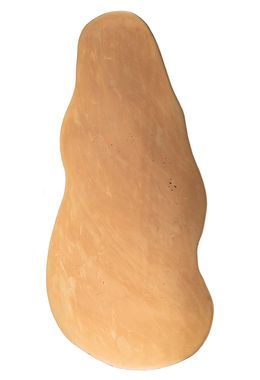
Goccia Freeform Custom Handmade Mirror with Gold Luster
Monica Madotto
Design - 108 x 42 x 1 cm Design - 42.5 x 16.5 x 0.4 inch
$2,500


Variation Soleil Nocturne
Christian Michaud
Sculpture - 48.3 x 78.7 x 2.5 cm Sculpture - 19 x 31 x 1 inch
$1,175
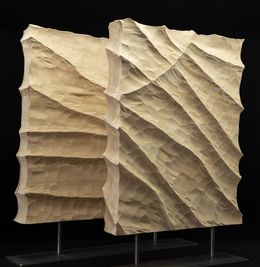

Big wall piece with dots
Monika Debus
Design - 31.5 x 58 x 58 cm Design - 12.4 x 22.8 x 22.8 inch
Sold

Crin Weaving Lamp-Extended Fiber Crin Lamp
Paula Mitsue Corrales Kido
Design - 31.5 x 31.5 x 31 cm Design - 12.4 x 12.4 x 12.2 inch
Sold

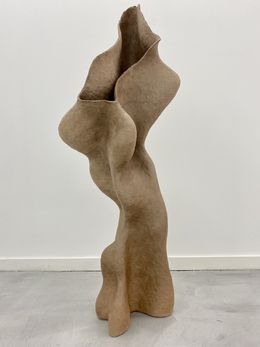


Bucatini candle holder Red, matte
(a.o.t.)
Design - 30 x 30 x 27 cm Design - 11.8 x 11.8 x 10.6 inch
$166
